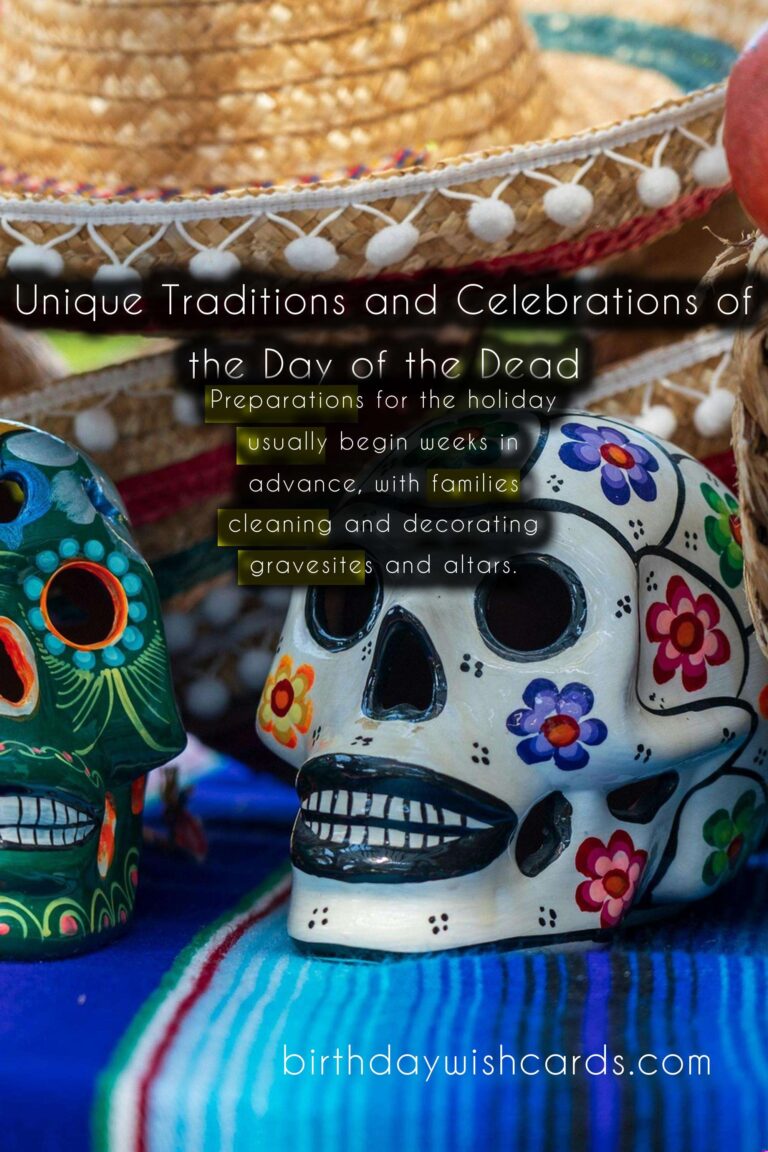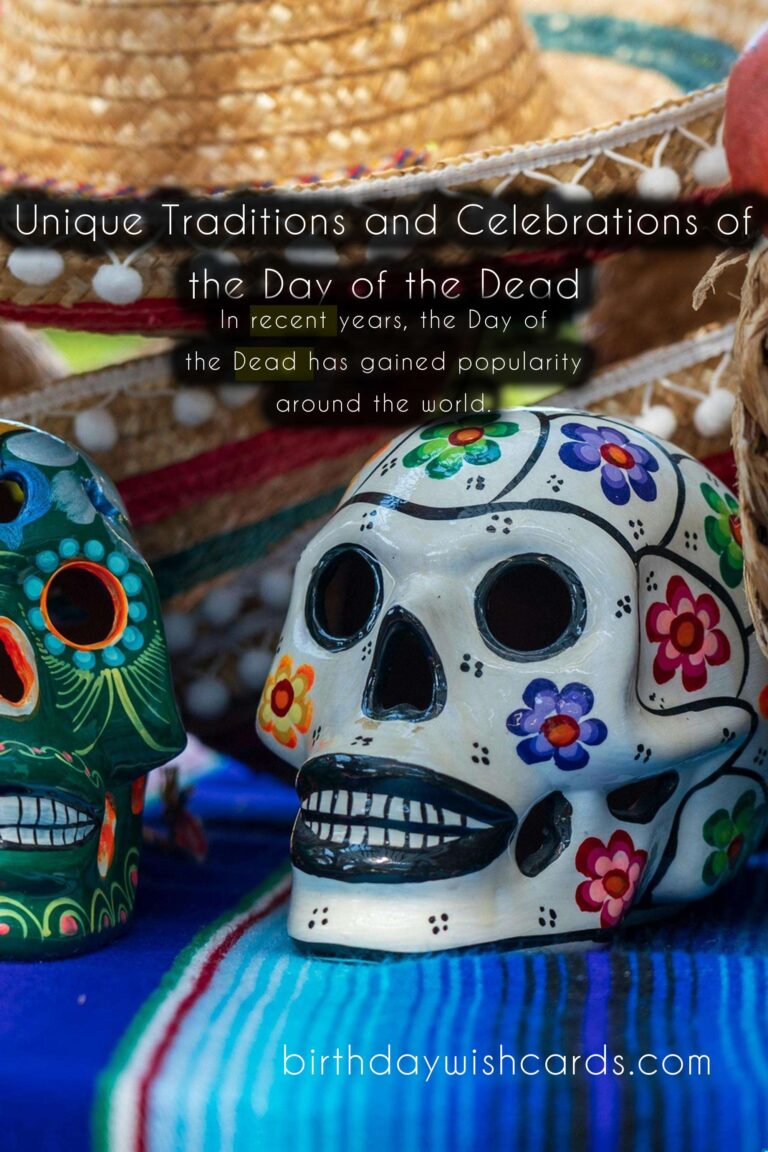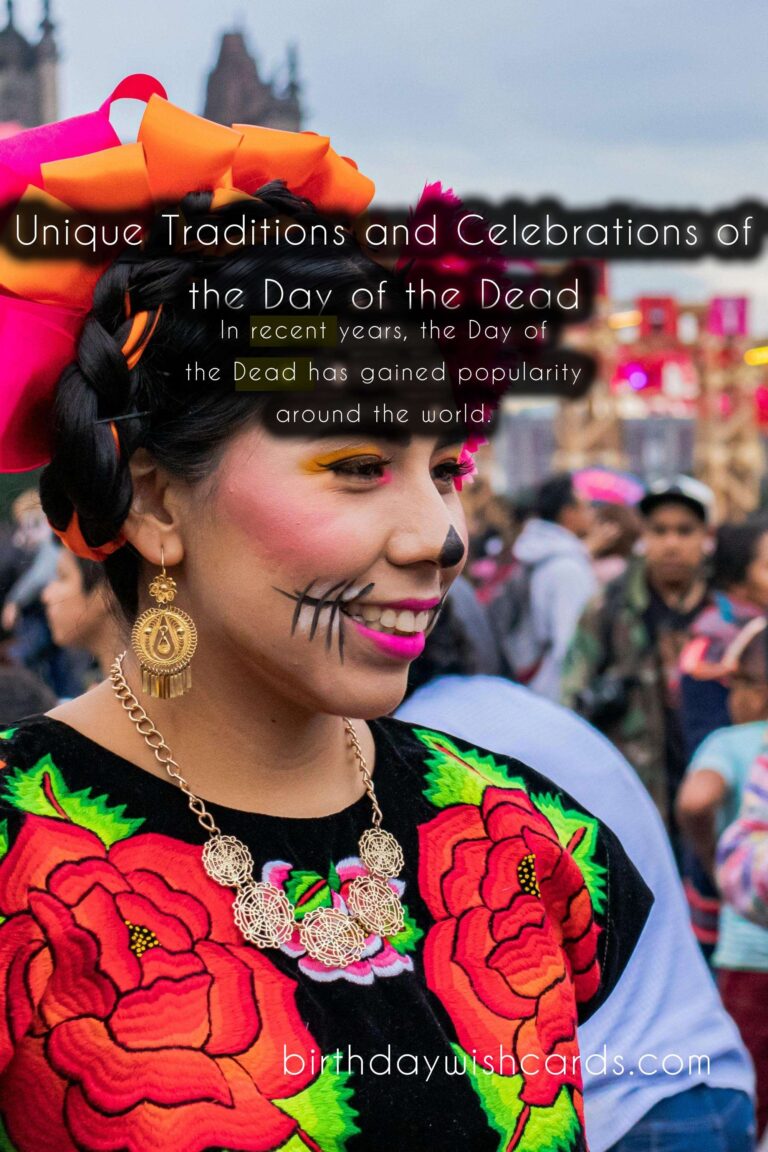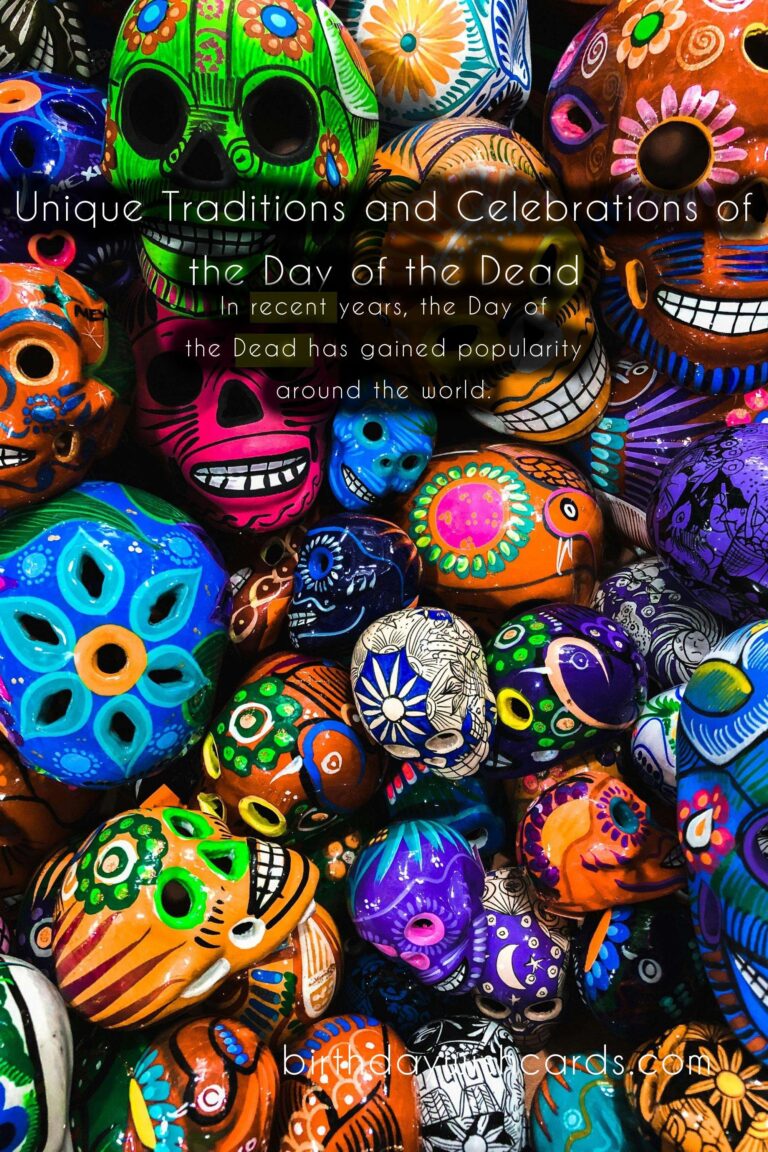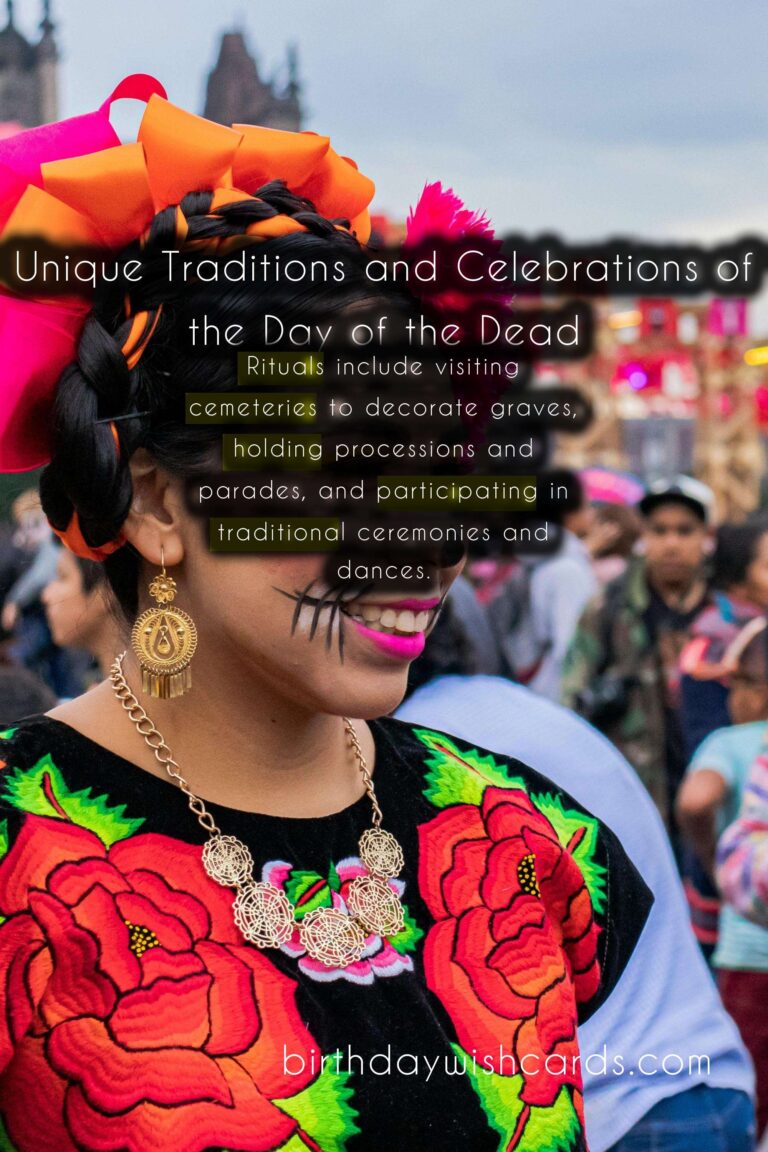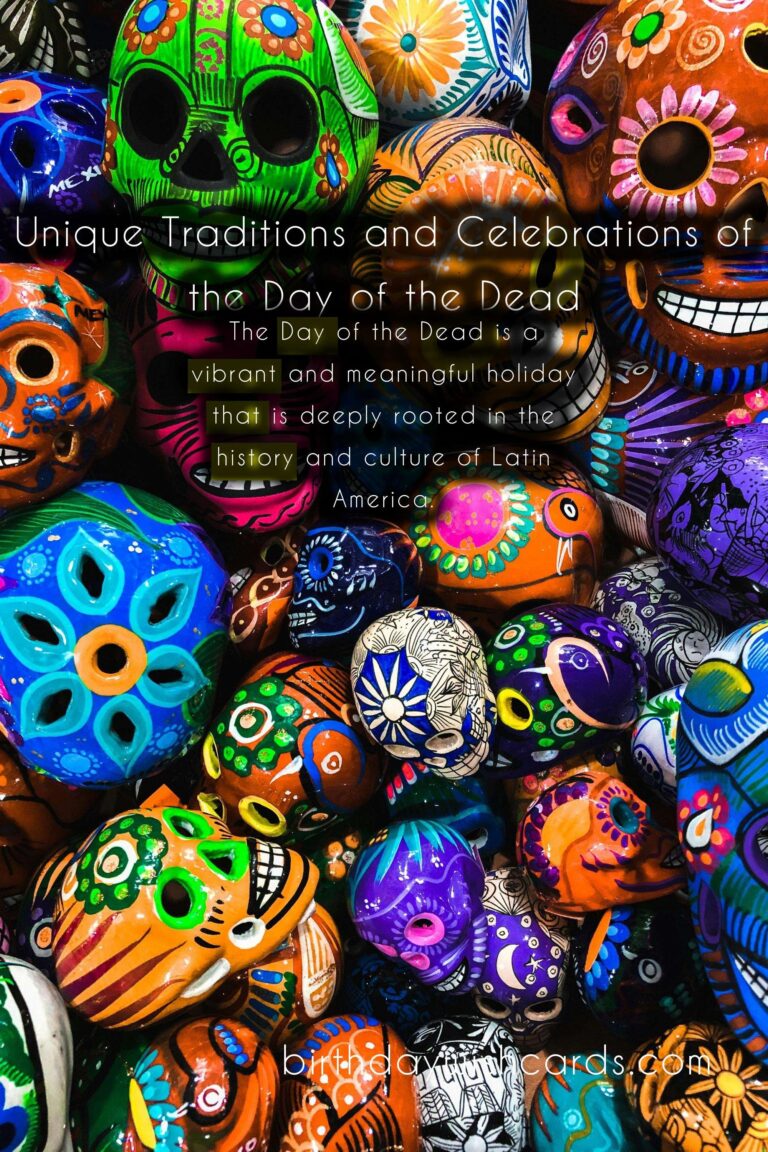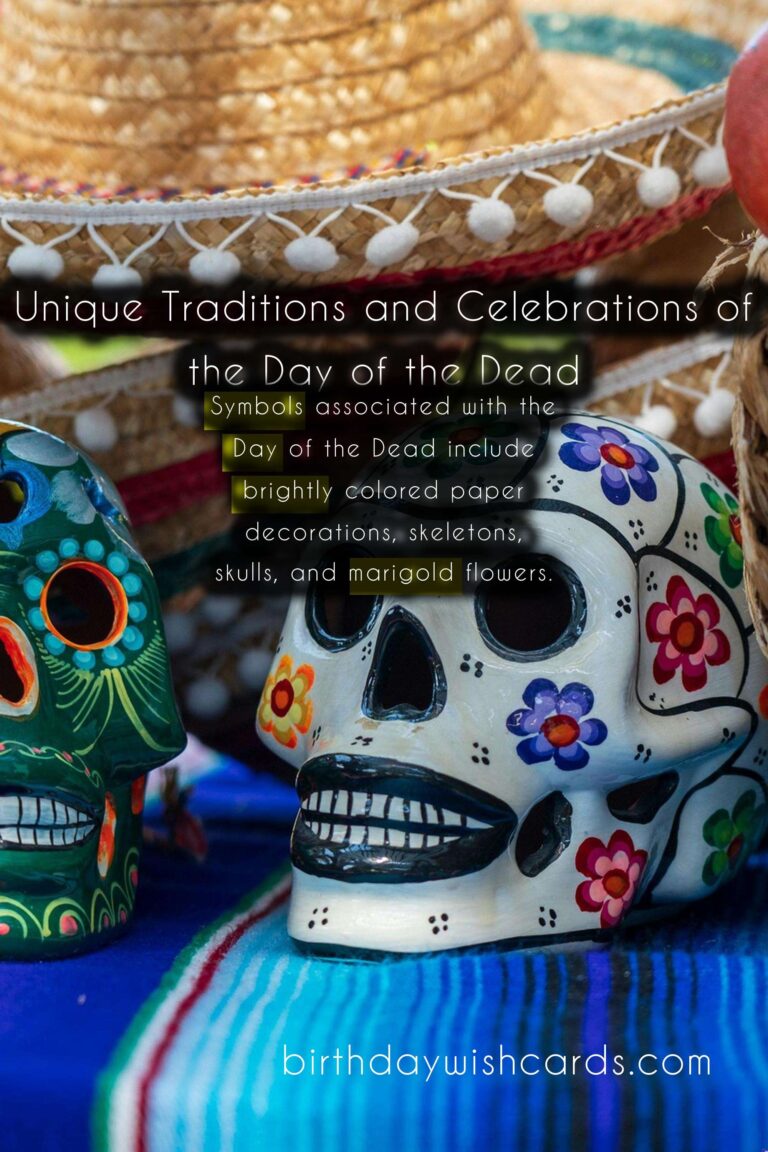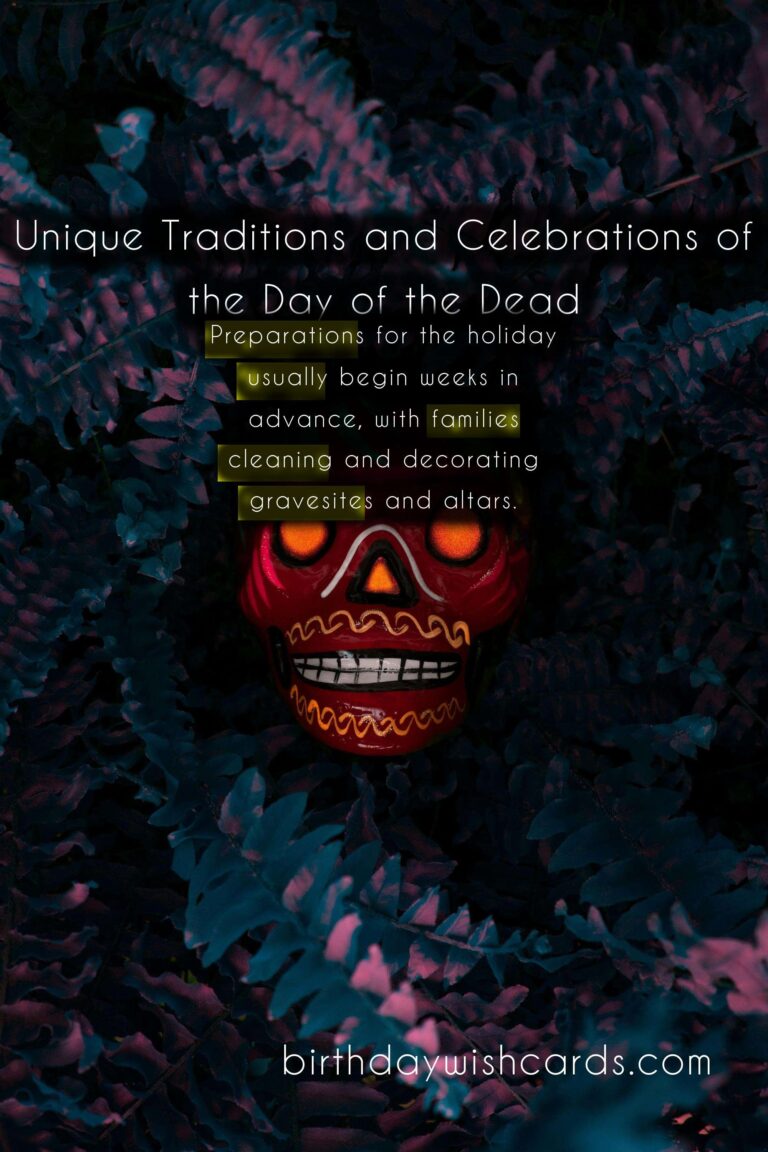 The Day of the Dead, also known as Dia de los Muertos, is a popular holiday celebrated in Mexico and other parts of Latin America. It is a time to honor and remember deceased loved ones, and it is believed that the spirits of the dead return to earth to visit their living relatives. The holiday has its roots in ancient Mesoamerican civilizations, and has been celebrated for thousands of years. Today, it is a blend of indigenous customs and Catholic traditions, making it a unique and colorful holiday.
The Day of the Dead, also known as Dia de los Muertos, is a popular holiday celebrated in Mexico and other parts of Latin America. It is a time to honor and remember deceased loved ones, and it is believed that the spirits of the dead return to earth to visit their living relatives. The holiday has its roots in ancient Mesoamerican civilizations, and has been celebrated for thousands of years. Today, it is a blend of indigenous customs and Catholic traditions, making it a unique and colorful holiday.
Traditional Celebrations
The Day of the Dead is celebrated on November 2nd, following All Saints’ Day on November 1st. Preparations for the holiday usually begin weeks in advance, with families cleaning and decorating gravesites and altars in their homes. The altars, known as ofrendas, are a central part of the celebration and are adorned with offerings such as food, drink, flowers, and candles.
The Role of Food in the Celebrations
Food is an important aspect of the Day of the Dead celebrations. Traditional dishes such as pan de muerto (bread of the dead) and calaveras de azúcar (sugar skulls) are often included on the ofrendas as offerings to the spirits. Families also prepare special meals to share with their loved ones who have passed away.
Symbolism and Rituals
Symbols associated with the Day of the Dead include brightly colored paper decorations, skeletons, skulls, and marigold flowers. These symbols can be found in both traditional and modern celebrations of the holiday. Rituals include visiting cemeteries to decorate graves, holding processions and parades, and participating in traditional ceremonies and dances.
The Global Popularity of the Day of the Dead
In recent years, the Day of the Dead has gained popularity around the world. Many cities in the United States, Europe, and Asia now hold celebrations and festivals to honor the holiday. This recognition of the Day of the Dead highlights its importance in Mexican and Latin American culture, and celebrates the rich traditions and beliefs that have been passed down through generations.
In Conclusion
The Day of the Dead is a vibrant and meaningful holiday that is deeply rooted in the history and culture of Latin America. It is a time to remember and honor loved ones who have passed away, and to celebrate the cycle of life and death. Through its colorful traditions and celebrations, the Day of the Dead continues to be a beloved and cherished holiday for millions around the world. The Day of the Dead is a popular holiday celebrated in Mexico and other parts of Latin America. The holiday has its roots in ancient Mesoamerican civilizations and has been celebrated for thousands of years. Preparations for the holiday usually begin weeks in advance, with families cleaning and decorating gravesites and altars. Food is an important aspect of the Day of the Dead celebrations. Symbols associated with the Day of the Dead include brightly colored paper decorations, skeletons, skulls, and marigold flowers. Rituals include visiting cemeteries to decorate graves, holding processions and parades, and participating in traditional ceremonies and dances. In recent years, the Day of the Dead has gained popularity around the world. The Day of the Dead is a vibrant and meaningful holiday that is deeply rooted in the history and culture of Latin America. 

